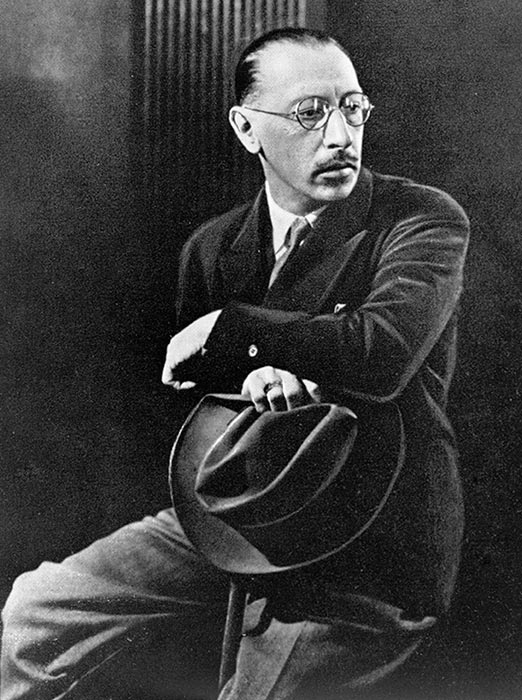[ad_1]
Stravinsky, 2024
This Week in Classical Music: June 17, 2024. Stravinsky. Is it simply us or did the music of Stravinsky lose a few of its magic? Not that way back it appeared that Stravinsky’s place on the very  prime of the musical Olympus was unshakable – however possibly listeners have had an excessive amount of of The Ceremony of Spring and piano transcriptions of Petrushka. That Igor Stravinsky, born on June 17th of 1882 outdoors of St. Peterburg, was a genius is certainly. He had a number of inventive phases: the preliminary, “Russian” section, intently linked to Sergei Diaghilev, a fantastic Russian impresario who established himself in Paris. It was throughout this era and owing to Diaghilev’s commissions that Stravinsky composed his hottest ballets: The Firebird (1910), Petrushka (1911), The Ceremony of Spring (1913), Les Noces (The Marriage ceremony, 1914-17). He made symphonic suites out of The Firebird and The Ceremony and transcribed components of Petrushka for the piano; the general public is aware of them higher in these incarnations. He additionally composed two operas, The Nightingale in 1914 and Histoire du soldat in 1918, and, as with the ballets, he then used them to put in writing orchestral items, Track of the Nightingale and a chamber suite from the Histoire. This was a remarkably fertile interval: his music was not like the rest ever composed (and due to this fact, scandalous, which solely helped his fame), its harmonies and dissonances, its rhythms, the Russian exoticism – all of it captivated the general public. By the tip of WWI Stravinsky was acknowledged as one of many biggest dwelling composers. After which, within the early Twenties he fully modified his model, the very nature of his compositions, changing the wild, in-your-face power of The Ceremony of Spring and different Russian-phase compositions with the Apollonian readability, stability and emotional distance of the ballets Pulcinella, Apollo, and The Fairy’s Kiss; the opera Oedipus rex, and several other instrumental items. Later he wrote three symphonies, Symphony of Psalms (1930), Symphony in C (1940), and Symphony in Three Actions (1945). All three are composed largely within the “neo-classical” model, although one can hear the youthful Stravinsky in all of them. After which he made one other flip, this time to the twelve-tone strategy of his rival, Schoenberg. That was within the mid-Nineteen Fifties when Stravinsky was already in his 70s. In music, this capability to reinvent himself is exclusive however he had a fantastic counterpart within the arts, Pablo Picasso, who additionally went via many “durations”: Blue, Rose, Cubism, Neoclassical, Surrealist, and so forth. For a very long time, Picasso was thought-about the best artist of the 20th century, however not too long ago we got here throughout an article that questioned his primacy. Is similar taking place to Stravinsky?
prime of the musical Olympus was unshakable – however possibly listeners have had an excessive amount of of The Ceremony of Spring and piano transcriptions of Petrushka. That Igor Stravinsky, born on June 17th of 1882 outdoors of St. Peterburg, was a genius is certainly. He had a number of inventive phases: the preliminary, “Russian” section, intently linked to Sergei Diaghilev, a fantastic Russian impresario who established himself in Paris. It was throughout this era and owing to Diaghilev’s commissions that Stravinsky composed his hottest ballets: The Firebird (1910), Petrushka (1911), The Ceremony of Spring (1913), Les Noces (The Marriage ceremony, 1914-17). He made symphonic suites out of The Firebird and The Ceremony and transcribed components of Petrushka for the piano; the general public is aware of them higher in these incarnations. He additionally composed two operas, The Nightingale in 1914 and Histoire du soldat in 1918, and, as with the ballets, he then used them to put in writing orchestral items, Track of the Nightingale and a chamber suite from the Histoire. This was a remarkably fertile interval: his music was not like the rest ever composed (and due to this fact, scandalous, which solely helped his fame), its harmonies and dissonances, its rhythms, the Russian exoticism – all of it captivated the general public. By the tip of WWI Stravinsky was acknowledged as one of many biggest dwelling composers. After which, within the early Twenties he fully modified his model, the very nature of his compositions, changing the wild, in-your-face power of The Ceremony of Spring and different Russian-phase compositions with the Apollonian readability, stability and emotional distance of the ballets Pulcinella, Apollo, and The Fairy’s Kiss; the opera Oedipus rex, and several other instrumental items. Later he wrote three symphonies, Symphony of Psalms (1930), Symphony in C (1940), and Symphony in Three Actions (1945). All three are composed largely within the “neo-classical” model, although one can hear the youthful Stravinsky in all of them. After which he made one other flip, this time to the twelve-tone strategy of his rival, Schoenberg. That was within the mid-Nineteen Fifties when Stravinsky was already in his 70s. In music, this capability to reinvent himself is exclusive however he had a fantastic counterpart within the arts, Pablo Picasso, who additionally went via many “durations”: Blue, Rose, Cubism, Neoclassical, Surrealist, and so forth. For a very long time, Picasso was thought-about the best artist of the 20th century, however not too long ago we got here throughout an article that questioned his primacy. Is similar taking place to Stravinsky?
Right here, from the late neo-classical interval, is Stravinsky’s Symphony in Three Actions. On this 1985 stay recording, Leonard Bernstein leads the Israel Philharmonic.
[ad_2]




